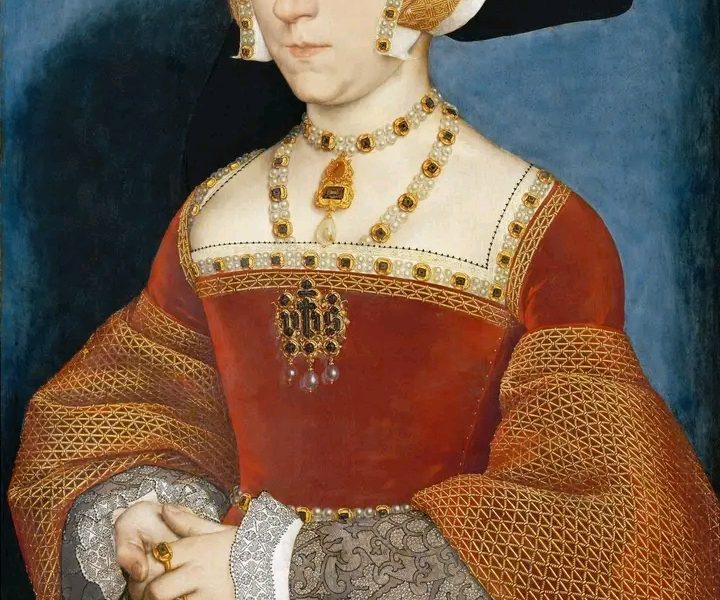Hampton Court Palace, England — Jane Seymour, Queen of England and the beloved third wife of King Henry VIII, passed
Hampton Court Palace, England — Jane Seymour, Queen of England and the beloved third wife of King Henry VIII, passed away on October 24, 1537. Her life, though brief, left an enduring mark on English history and the Tudor lineage. Her grace, dignity, and quiet strength continue to be admired centuries after her passing.
Born at Wolfhall in Wiltshire, Jane Seymour came from a respected English noble family. Her upbringing was marked by refinement, piety, and a strong sense of duty—qualities that would later define her role as queen. From a young age, she was recognized for her poise and composure, traits that would serve her well at court.
Jane entered the royal court as a lady-in-waiting, first to Queen Catherine of Aragon and later to Queen Anne Boleyn. Her intelligence and gentle demeanor captured attention, ultimately drawing the admiration of King Henry VIII. The couple married on May 30, 1536, following the tragic downfall of Anne Boleyn, placing Jane in a delicate but influential position.
As Queen Consort, Jane Seymour was known for her calm and compassionate presence. She brought a sense of stability to a court often marked by political and personal turbulence. Her ability to maintain poise and offer kindness earned her respect from both courtiers and the public, solidifying her place in the royal household.
Jane’s most notable contribution to history came with the birth of her son, Prince Edward, on October 12, 1537. The birth fulfilled King Henry VIII’s long-cherished hope for a male heir, securing the continuation of the Tudor dynasty. The joyous occasion, however, was shadowed by the fragility of her health after childbirth.
Tragically, just twelve days after giving birth, Jane Seymour passed away due to postnatal complications. Her death brought profound sorrow to the king, her family, and the nation. The loss of the young queen marked one of the most poignant moments in Tudor history and left a lasting impression on those who knew her.
She was interred with honor in St George’s Chapel at Windsor Castle, becoming the only one of Henry VIII’s six wives to be buried beside him. Through her son, who later ascended the throne as King Edward VI, Jane Seymour’s legacy endured as a symbol of maternal devotion, loyalty, and sacrifice.
Beyond her role as queen, Jane Seymour is remembered for her quiet strength and selfless nature. She exemplified dignity and courage, navigating the complexities of court life with poise. Her influence extended beyond politics, shaping the cultural and familial legacy of the Tudor era.
Her life reminds us that true greatness often lies in quiet resilience and selfless service. Courtiers, historians, and the public alike continue to honor her contributions to the monarchy and her role in securing the lineage of England’s royal family.
Today, we remember Jane Seymour not only as a queen but as a woman whose life, though short, left an enduring impact. Her memory is celebrated with reverence, reminding future generations of the strength, grace, and dedication that defined her time as Queen of England.





